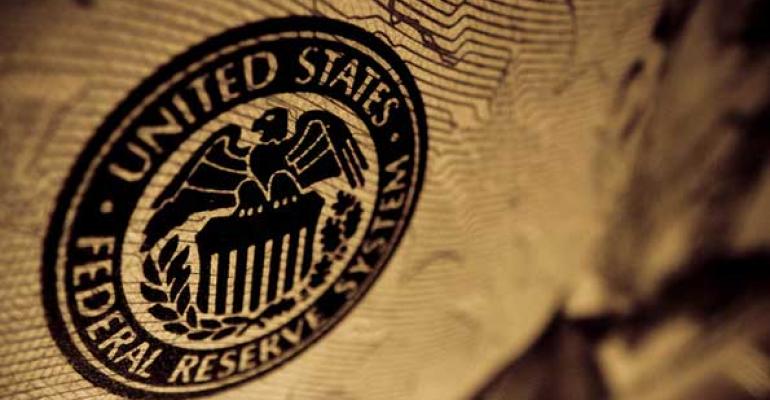(Bloomberg) -- The Federal Reserve left interest rates near zero and signaled it would hold them there through at least 2023 to help the U.S. economy recover from the coronavirus pandemic.
The Federal Open Market Committee “expects to maintain an accommodative stance of monetary policy” until it achieves inflation averaging 2% over time and longer-term inflation expectations remain well anchored at 2%, the central bank said in a statement Wednesday following a two-day policy meeting.
The statement reflects the central bank’s new long-term policy framework in which officials will allow inflation to overshoot their 2% target after periods of under-performance. That shift was announced by Powell last month at the central bank’s annual Jackson Hole policy conference.
Following the statement’s release, Treasuries were little changed, with the 10-year yield steady at about 0.68%. Stocks gained slightly.
The vote, in the FOMC’s final scheduled meeting before the U.S. presidential election on Nov. 3, was 8-2. Dallas Fed President Robert Kaplan dissented, preferring to retain “greater policy rate flexibility,” while Minneapolis Fed President Neel Kashkari dissented in favor of waiting for a rate hike until “core inflation has reached 2% on a sustained basis.”
Powell and other Fed officials have stressed in recent weeks that the U.S. recovery is highly dependent on the nation’s ability to better control the coronavirus, and that further fiscal stimulus is likely needed to support jobs and incomes.
Support Economy
The Fed on Wednesday committed to using its full range of tools to support the economic recovery. The central bank repeated it will continue buying Treasuries and mortgage-backed securities “at least at the current pace to sustain smooth market functioning.” A separate statement on Wednesday pegged those amounts at $80 billion of Treasuries a month and $40 billion of mortgage-backed securities.
Officials see rates staying ultra-low through 2023, according to the median projection of their quarterly forecasts, though four officials penciled in at least one hike in 2023.
In other updates to quarterly forecasts, Fed officials see a shallower economic contraction this year than before, but a slower recovery in the coming years.
In addition to slashing borrowing costs in March, the central bank has pumped trillions of dollars into the financial system through bond purchases and launched a slew of emergency lending facilities to keep businesses afloat. The economy has partly recovered from the steepest downturn on record and some sectors such as housing are doing well, but Covid-19 continues to kill thousands of Americans each week, unemployment remains high and industries like hospitality and travel are depressed.
Moreover, temporary extra jobless benefits are running out and the political stalemate over a new round of stimulus threatens to set back the economy. Uncertainty could hang over government policies at least until the outcome of the presidential and congressional elections is clear. Republicans including President Donald Trump -- who trails challenger Joe Biden in national polls -- have proposed a smaller package of aid than Democrats have.





